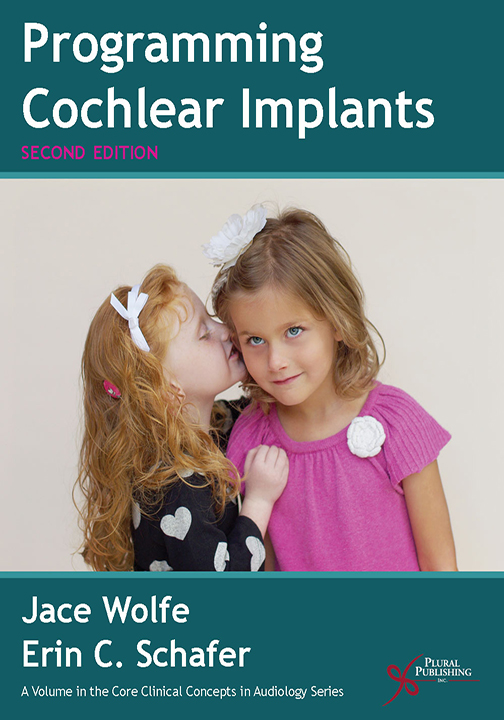
Programming Cochlear Implants.
Second Edition
Jace Wolfe, Erin C. Schafer
Details: 408 pages, 2-Color, eBook
ISBN13: 978-1-59756-708-4
© 2015 | Available
A Volume in the Core Clinical Concepts in Audiology Series.
Cochlear implants offer significant benefits for children and adults with severe to profound hearing loss; however, to realize these benefits the device must be carefully and correctly programmed. With current information on cochlear implant technology, Programming Cochlear Implants, Second Edition, a volume in the Core Clinical Concepts in Audiology Series, is a valuable guide for clinicians providing services to cochlear implant users or as a teaching tool for graduate-level students.
Programming Cochlear Implants, Second Edition introduces the basics of cochlear implant hardware and programming and continues through advanced programming techniques, with manufacturer-specific information and case studies. The text reviews clinical protocols for cochlear implant management; programming considerations for bilateral cochlear implant; troubleshooting during the programming process; device-specific programming techniques; use of objective measures to set cochlear implant programs; use of FM and assistive listening devices with cochlear implants; and providing support to difficult-to-program users, such as infants, individuals with cognitive impairment, persons with disabilities, and so forth.
New topics addressed in the second edition include
- preservation of residual hearing following cochlear implant surgery
- programming cochlear implants for patients with substantial residual hearing in the low-frequency range, including electrode array options
- cochlear implant impedances and the impact of impedance on programming and management
- signal coding strategies and signal processing
- theoretical concepts that may influence cochlear implant programming
Reviews
"We have received the second edition of this excellent book, and it is over twice the size of the first edition and even better than the first edition. We recommend it."
—Dan Schwartz, in The Hearing Blog (2015)
"Brand-specific information is provided in separate chapters, a feature which helps a clinician new to cochlear implants get familiar with brand-specific software, terminology, features, and historical processor names. This makes it an easy-to-use reference book when considering clinical approaches. The authors quickly move into the underpinning knowledge of strategies and psychophysics with an approach that shows the need for discovering recipient preferences, and highlighting the uniqueness of their programming but also the technicalities relating to the implant array and device. Chapter seven discusses a holistic view of implant programming with discussion on collaboration with surgical teams, suggested timelines for care, and delves into considerations for rehabilitation which highlights the need for optimal programming, but also the need for specialised therapy. [...] Of particular interest are 15 case studies running the reader through from creating a basic programme, using objective measures for fitting, programming for a one-year-old child, addressing speech perception concerns from over-stimulation for a young child, and four electrode impedance cases with different causes. Overall, this is a book sufficiently heavy on detail, yet does not feel overly technical for a new clinician to learn from. It provides the principles that underpin cochlear implant programming yet approaches the topic in a manner that highlights patient needs, something I think all clinicians will appreciate."
—Nathan Barlow, in ENT & Audiology News (September 2020)
20Q: Outcomes of Children with Cochlear Implants - Shooting for the Moon!
Read Jace Wolfe's interview with Gus Mueller from AudiologyOnline here.
Foreword by Teresa A. Zwolan
Preface
Acknowledgments
Contributors
Chapter 1. Basic Components and Operation of a Cochlear Implant
Jace Wolfe, Erin C. Schafer, and Sara Neumann
Basic Operation of Cochlear Implants
Basic Components of Current Cochlear Implant Systems
Advanced Bionics Corporation
Cochlear Corporation
MED-EL Corporation
Key Concepts
Chapter 2. Basic Terminology of Cochlear Implant Programming
Parameters Affecting Signal Coding in the Intensity Domain
Parameters Affecting Signal Coding in the Frequency Domain
Parameters Affecting Signal Coding in the Time Domain
Basic Cochlear Implant Terminology
Basic Cochlear Implant Signal Coding Strategies
Key Concepts
Chapter 3. Basic Principles of Programming
Preactivation Procedures
Programming After Implantation
Key Concepts
Chapter 4. Programming Advanced Bionics Implants
Advanced Bionics CPI-3 Programming Interface
Programming Advanced Bionics Sound Processors
Key Concepts
Chapter 5. Programming Cochlear Devices
Programming the Nucleus 6 System
Programming Previous Generations of Nucleus Implants
Key Concepts
Chapter 6. Programming MED-EL Cochlear Implants
''Jace Wolfe, Erin C. Schafer, and Sara Neumann
Patient Information Entry
Connecting the Sound Processor and Conducting the Electrode Impedance Measurement
Creating a Program in MAESTRO 4.0
MED-EL Specific Troubleshooting
Additional Considerations
Auditory Response Telemetry (ART)
Key Concepts
Chapter 7. Clinical Considerations: Putting All of the Pieces Together
Collaboration with Cochlear Implant Surgeon/Medical Evaluation
Programming Schedule
The Role of Electrically Evoked Potentials in Programming
Additional Habilitative/Rehabilitative Considerations
Considerations for Bilateral Cochlear Implantation
Key Concepts
Chapter 8. Patient Complaints and Complications
Managing Recipients Who Experience Disappointing Outcomes
Identifying "Red Flags"
Factors Influencing Cochlear Implant Outcomes
Programming Adjustments for the Most common Complaints and Complications
Key Concepts
Chapter 9. Hearing Assistance Technology (HAT) and Cochlear Implants
Basic Description of Personal Systems
Optimal Systems for Use with a Cochlear Implants
Description and Programming for Personal HAT and Cochlear Implants
HAT to Improve Telephone Conversations
Summary of HAT for Cochlear Implants
Key Concepts
Chapter 10. Programming Recipients Using Electric-Acoustic Stimulation
Introduction
Electrode Array Location and Place of Stimulation
Current Devices
Performance with Hybrid or Minimally Invasive Cochlear Implants
Selecting Electrode Arrays for Hearing Preservation
Optimizing the Fitting
Clinical Protocol for Programming EAS Devices
The Future of EAS
Key Concepts
Chapter 11. Case Studies
Jace Wolfe, Erin C. Schafer, and Mila Morais
Case Study 1: Basic Example of Creating Programs for an Adult Recipient
Case Study 2: Establishing a Program for an Adult Via Objective Measures
Case Study 3: Creating Programs for a 1-Year-Old Implant Recipient
Case Study 4: Creating a Program for a Young Recipient Using Advanced Bionics HiRes 90K Advantage Cochlear Implant
Case Study 5: Inadequate Stimulation Levels and Narrow Electrical Dynamic Range
Case Study 6: Using Objective Measure to Set Upper-Stimulation Levels
Case Study 7: Creating a Program for a Recipient with Multiple Disabilities
Case Study 8: Use of Objective Measures as a Guide to Avoid Overstimulation
Case Study 9: Addressing Speech-Recognition Difficulties That May Be Associated with Excessive Stimulation
Case Study 10: Utilizing Behavioral Information to Create a Cochlear Implant Program and Address Recipient Difficulties
Case Study 11: Sawtooth Electrode Impedance Pattern Managed with Programming
Case Study 12: Flat Low Common Ground Impedances with Performance Decrease
Case Study 13: Physiologic-Related Electrode Impedance Changes
Case Study 14: Impedance Changes Secondary to Excessive Stimulation
Case Study 15: Programming for a Teenage Recipient Who Had Significant Residual Hearing After Implantation
Key Concepts
References
Index
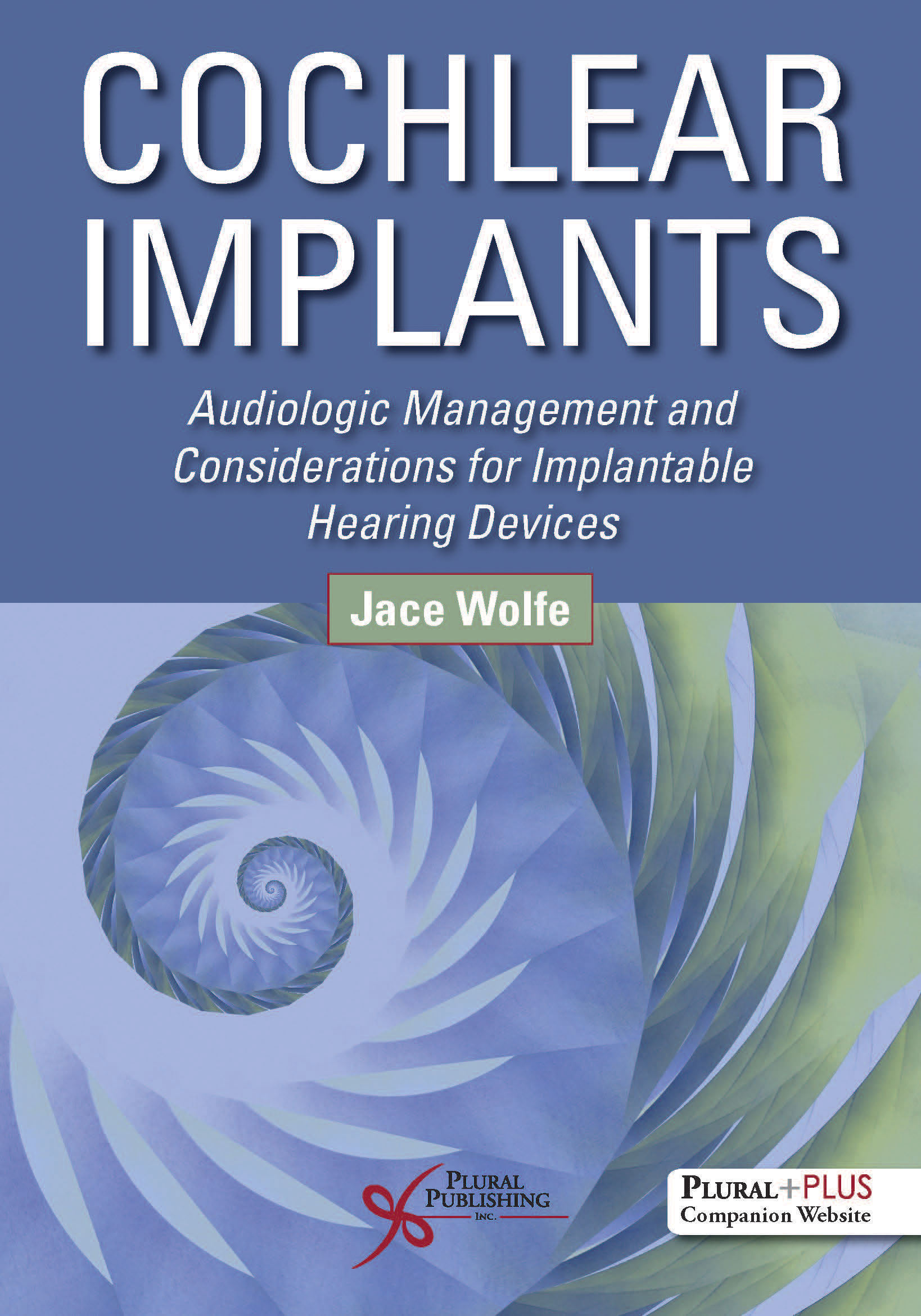
Cochlear Implants: Audiologic Management and Considerations for Implantable Hearing Devices
First Edition
Jace Wolfe
Details: 858 pages, Full Color, Hardcover, 8.5" x 11"
ISBN13: 978-1-59756-892-0
© 2020 | Available
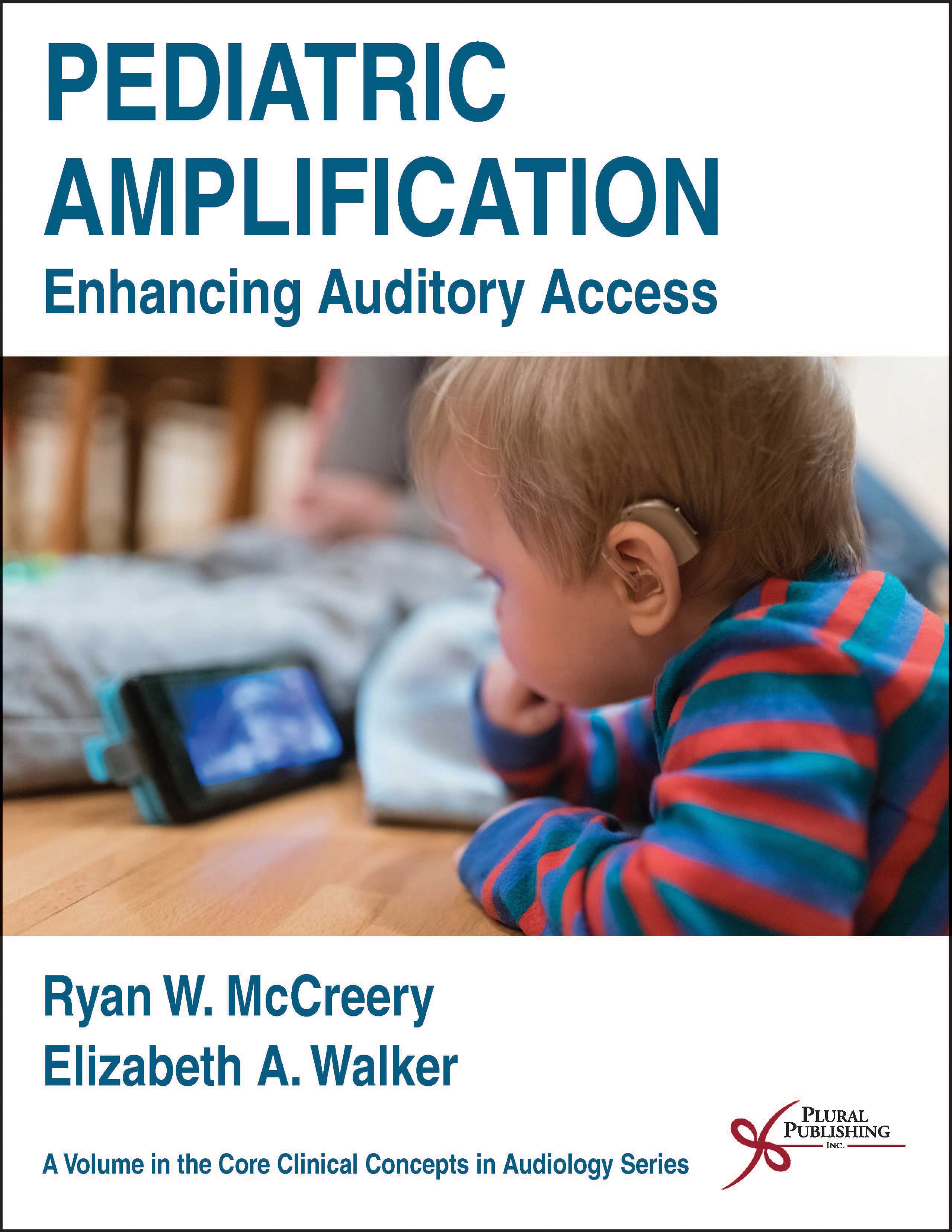
Pediatric Amplification: Enhancing Auditory Access
First Edition
Ryan W. McCreery, Elizabeth A. Walker
Details: 272 pages, B&W, Softcover, 8.5" x 11"
ISBN13: 978-1-59756-992-7
© 2017 | Available
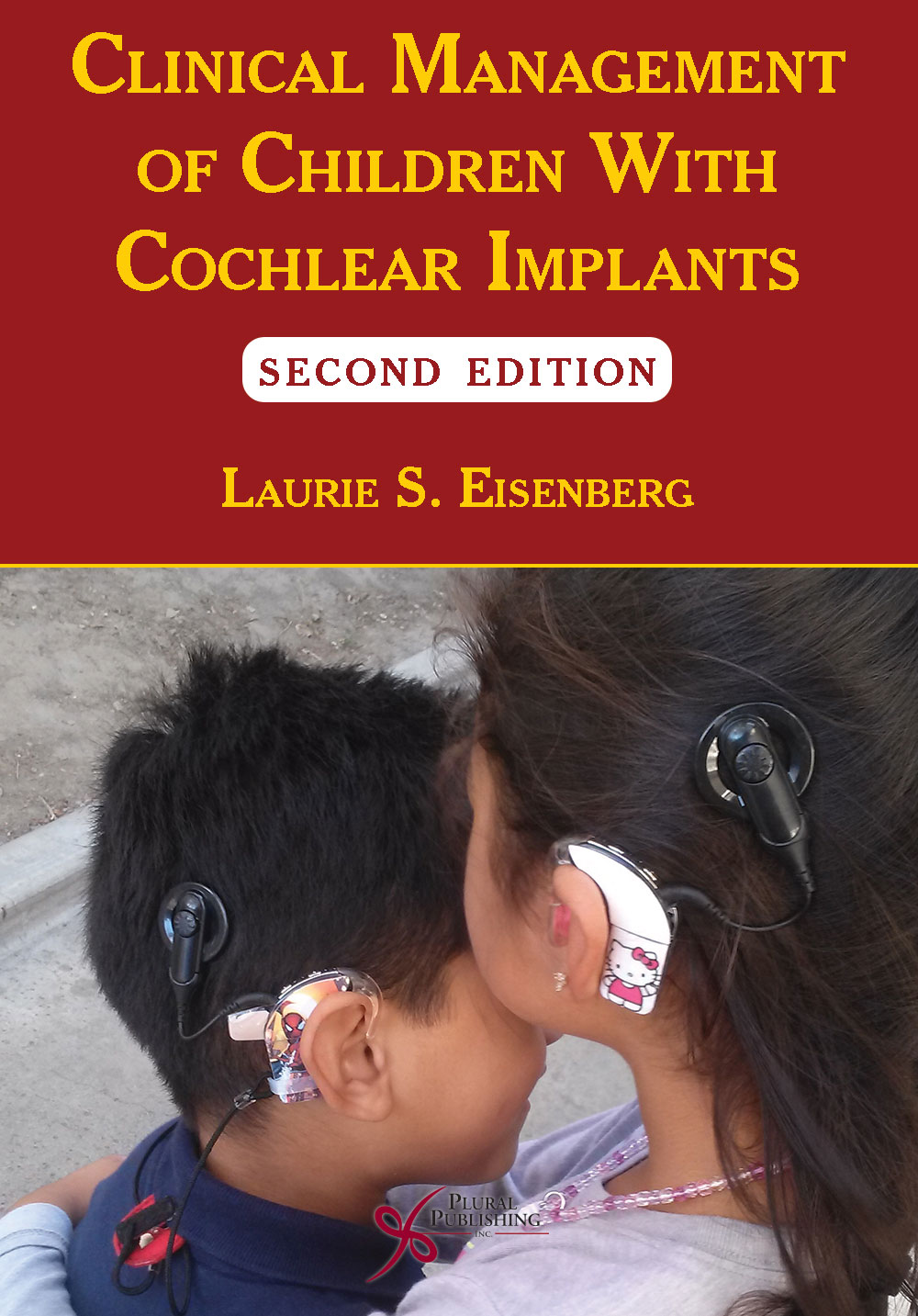
Clinical Management of Children With Cochlear Implants
Second Edition
Laurie S. Eisenberg
Details: 890 pages, B&W, Softcover, 7" x 10"
ISBN13: 978-1-59756-723-7
© 2017 | Available
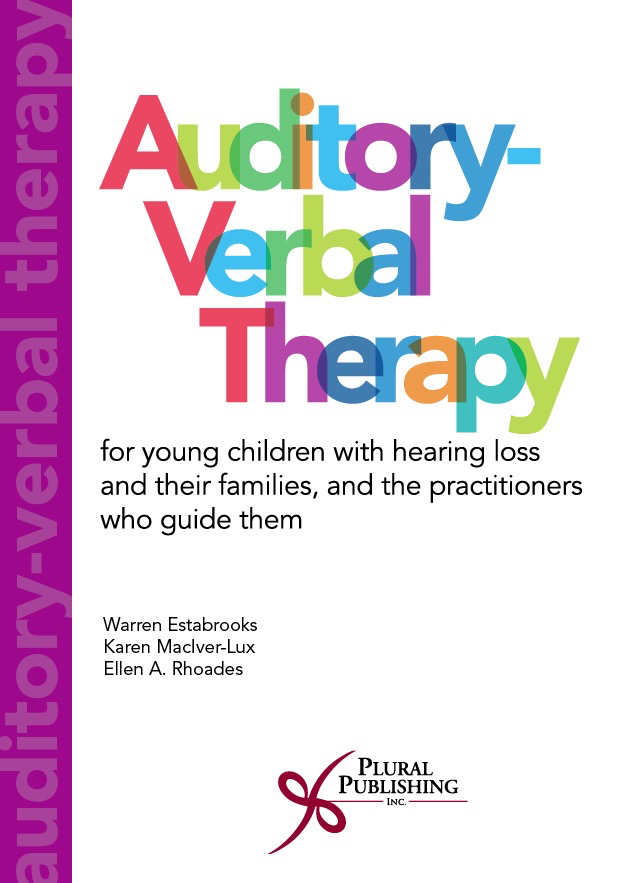
Auditory-Verbal Therapy: For Young Children with Hearing Loss and Their Families, and the Practitioners Who Guide Them
First Edition
Warren Estabrooks, Karen MacIver-Lux, Ellen A. Rhoades
Details: 602 pages, B&W, Hardcover, 7" x 10"
ISBN13: 978-1-59756-888-3
© 2016 | Available
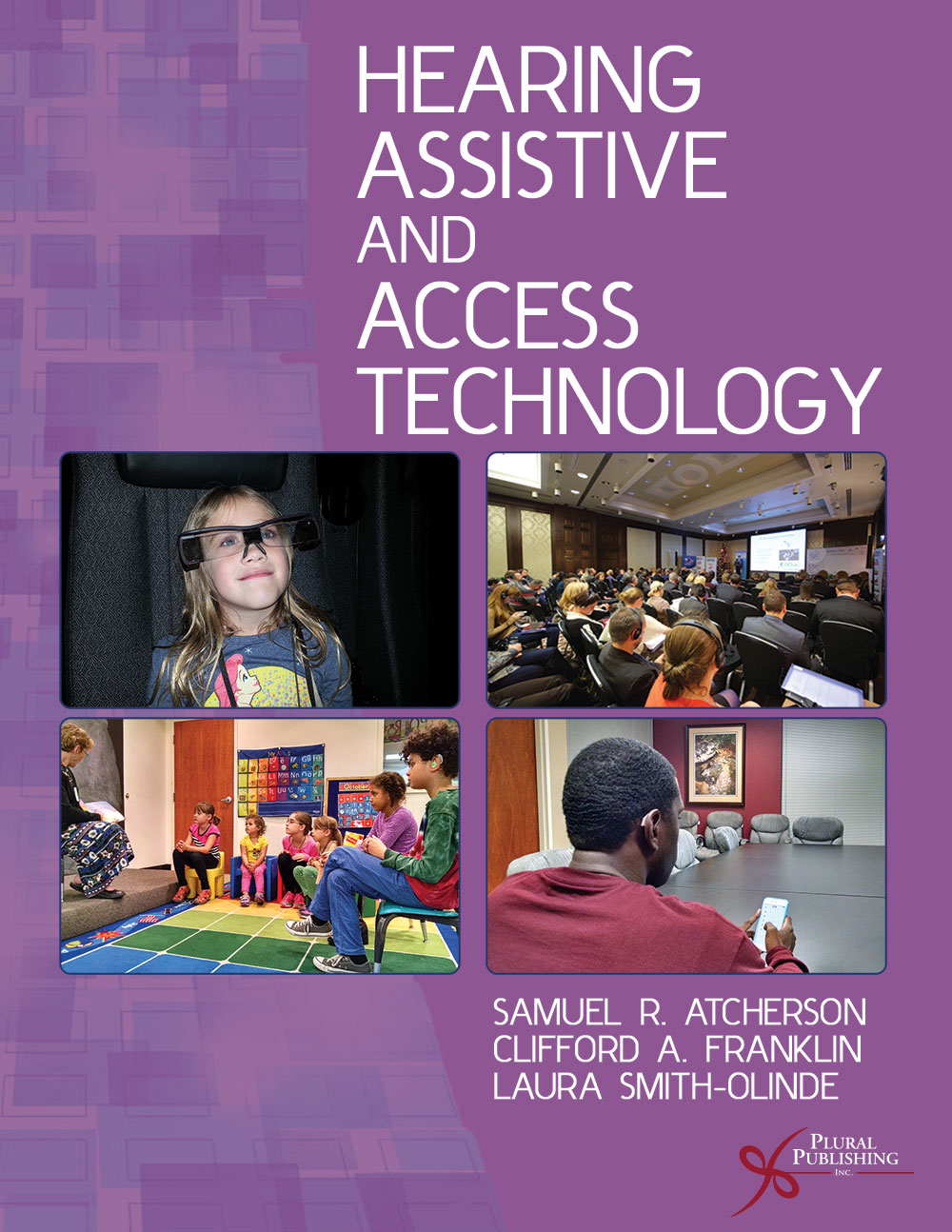
Hearing Assistive and Access Technology
First Edition
Samuel R. Atcherson, Clifford A. Franklin, Laura Smith-Olinde
Details: 320 pages, B&W, Softcover, 7" x 10"
ISBN13: 978-1-59756-512-7
© 2015 | Available
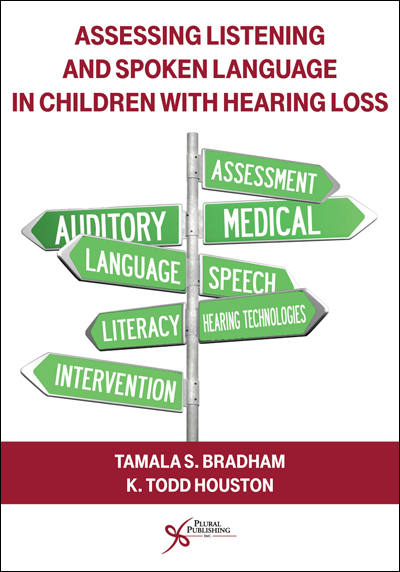
Assessing Listening and Spoken Language in Children with Hearing Loss
First Edition
Tamala S. Bradham, K. Todd Houston
Details: 496 pages, B&W, Softcover, 7" x 10"
ISBN13: 978-1-59756-576-9
© 2015 | Available
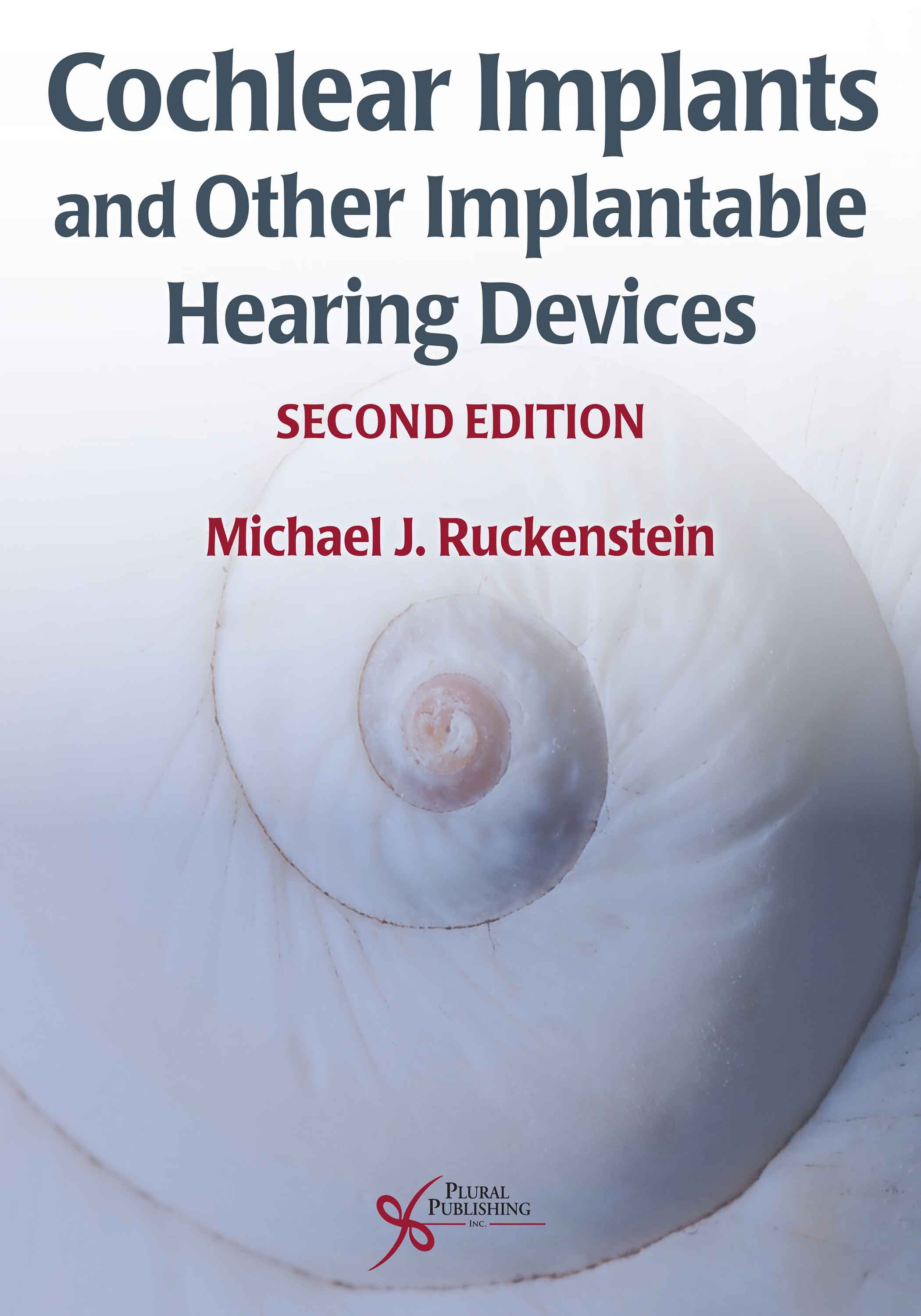
Cochlear Implants and Other Implantable Hearing Devices
Second Edition
Michael J. Ruckenstein
Details: 383 pages, Full Color, Hardcover, 8.5" x 11"
ISBN13: 978-1-63550-126-1
© 2020 | Available
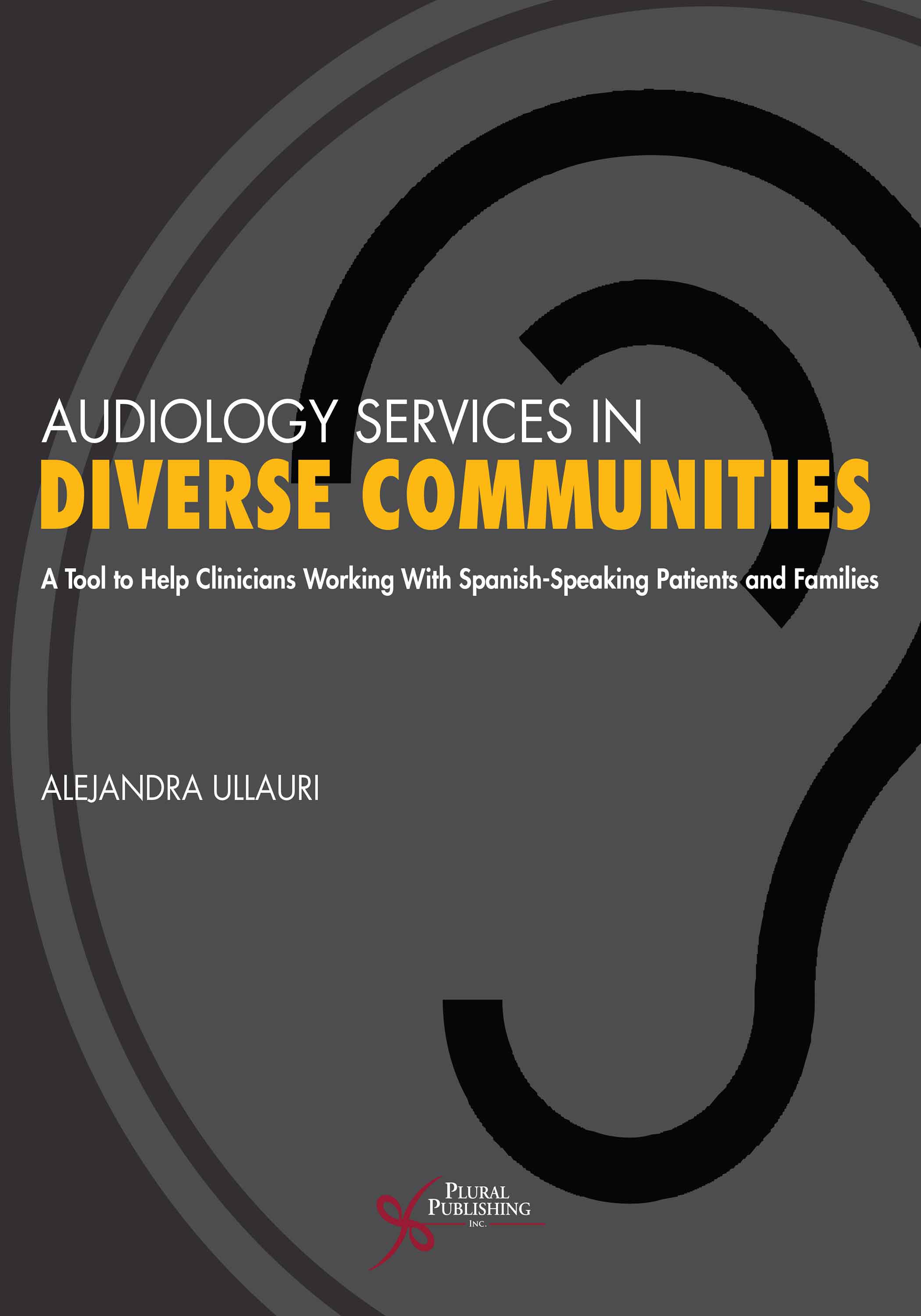
Audiology Services in Diverse Communities: A Tool to Help Clinicians Working With Spanish-Speaking Patients and Families
First Edition
Alejandra Ullauri
Details: 210 pages, B&W, Softcover, 8.5" x 11"
ISBN13: 978-1-63550-651-8
© 2022 | Available
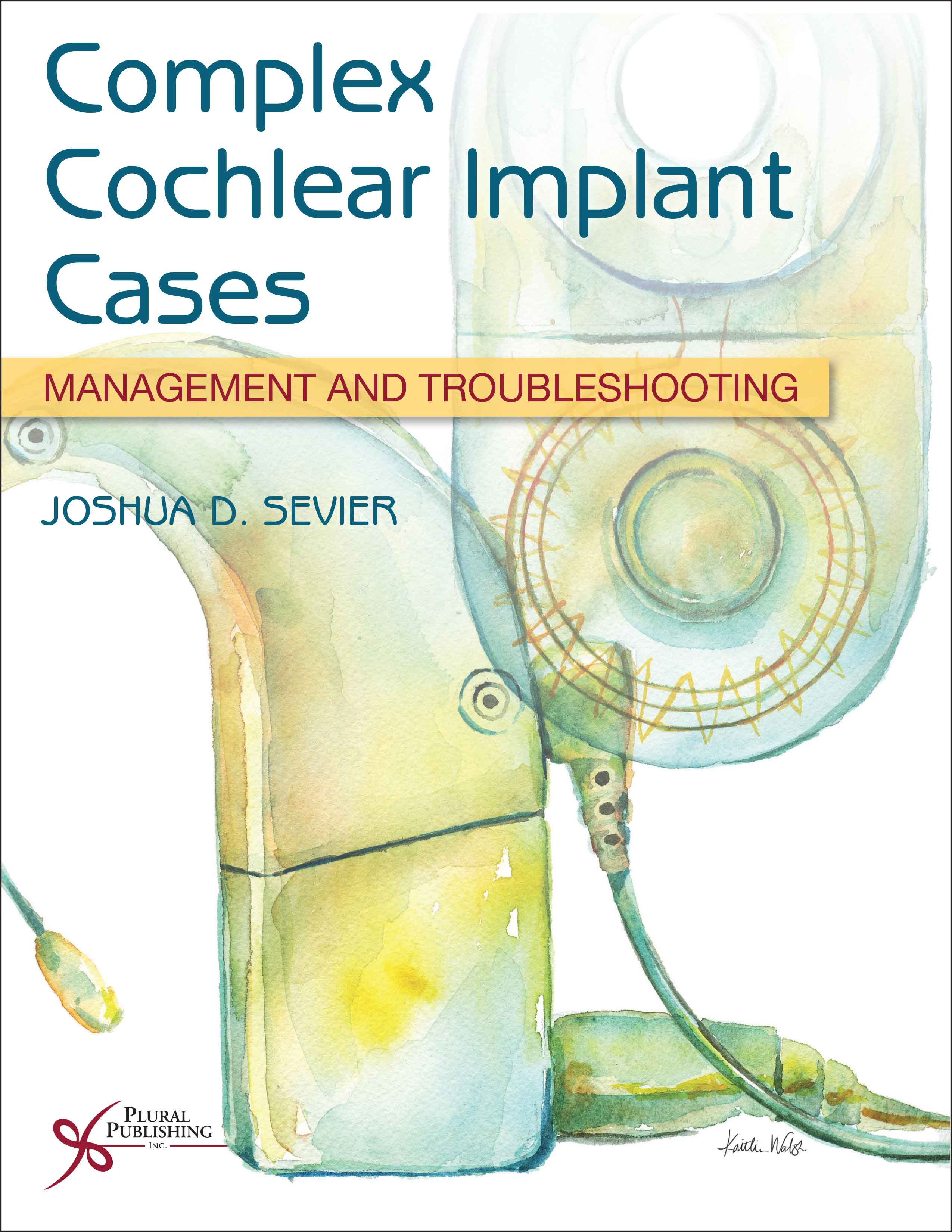
Complex Cochlear Implant Cases: Management and Troubleshooting
First Edition
Joshua D. Sevier
Details: 278 Pages, B&W, Softcover, 7" x 10"
ISBN13: 978-1-63550-383-8
© 2023 | Available


